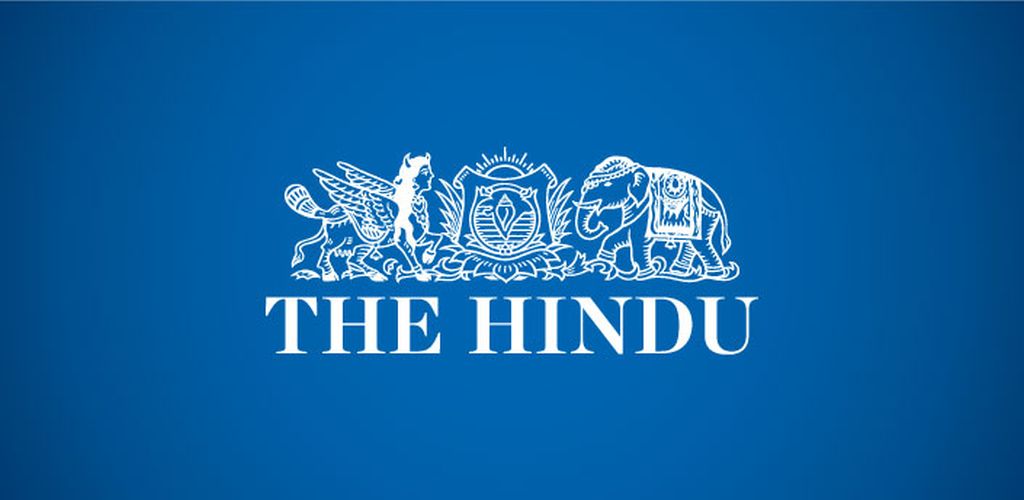THE HINDU EDITORIAL : MARCH 6, 2018

THE HINDU EDITORIAL : MARCH 6, 2018
a) High noon: dealing with above-normal temperatures
The India Meteorological Department’s forecast of above-normal maximum and minimum temperatures across the country during the pre-monsoon March-May period is a timely alert for State authorities to review their preparedness. Even a marginal rise above the normal will lead to enormous heat stress for millions of Indians, given the deprived conditions in which they live. Moreover, there are distinct groups at particular risk for health-related problems during a heat wave, such as senior citizens and people with pre-existing disease, mental illness or disability, which prevents them from being able to care for themselves. It is the responsibility of governments to ensure that community-level interventions are taken up to help vulnerable groups. The advent of hot weather this year is marked by temperatures rising between 1.6° Celsius and 5° C above normal in States such as Rajasthan, Jammu and Kashmir, Uttarakhand, Uttar Pradesh, Himachal Pradesh and Madhya Pradesh; other northern, central and eastern States also show a small increase from March 1. Of course, Tamil Nadu, Puducherry and parts of Rayalaseema have begun the season with a slight decrease in minimum temperatures, and will possibly have less oppressive temperatures in coming weeks. For most other States, though, the summer of 2018 may pose a public health challenge, for which they must prepare with the experience gained during the many previous heat waves. One scientific estimate of annual mortality attributable to heat waves between 2010 and 2015 ranges between 1,300 and 2,500. A spike in summer temperatures in India is not new, but some scientists contend that a half-degree rise in average temperature in recent decades has resulted in a higher probability of extreme heat waves and caused a lot of deaths. A heat event thus has serious implications for public health: it can lead to fatal heat stroke in a small percentage of people, while many more could encounter exhaustion, cramps and fainting. It is vital for governments to ensure that all stakeholders, including the health-care system, are prepared to deal with the phenomenon. The World Health Organisation recommends that countries adopt heat-health warning systems, including daily alerts to ensure that people are in a position to deal with adverse weather, starting with reduction of exposure. Water stress is a common and often chronic feature in many States: arrangements should be made to meet scarcity. There is some hope that the southwest monsoon this year will benefit from an expected moderate La Niña condition in the equatorial Pacific, marked by cooler-than-average sea surface temperature. Taking the long-term view, India has to pursue mitigation of greenhouse gases vigorously, since there is a perceived link between increases in average temperature caused by climate change and the frequency and intensity of extreme weather events.
b) It’s time to re-imagine South Asia: On India-China-Pakistan cooperation
A few months ago, Anjum Altaf, former dean of the prestigious Lahore University of Management Sciences (LUMS), wrote an article in the Dawn newspaper, making a strong case for mutually beneficial economic cooperation between Pakistan and India. He also gave a revealing example of how this has become impossible because of “blind nationalism” in Pakistan. “At the time,” he wrote, “when tomatoes were selling for Rs300 a kilo in Lahore, they were available at Indian Rs40 a kilo in Amritsar a mere 30 miles away. But a visceral Indo-phobia, shared by many of our influential, stood in the way of consumers benefiting from the lower priced supply.” Many Pakistani politicians want nothing to be imported from India, the enemy nation. This kind of blind nationalism is by no means Pakistan’s monopoly. Those who watch Indian TV channels debating India-Pakistan relations routinely hear similar Pak-phobia. Result: despite being neighbours, India and Pakistan are among the least integrated nations in the world. Because of their unending mutual hostility, South Asia too has become the least integrated region in the world. The South Asian Association for Regional Cooperation (SAARC) is in a coma. Sadly, the most populous region in the world has also remained home to the largest number of poor people in the world.
So near, so far
A few striking examples will show how our two countries, which were part of a single seamless socio-economic and cultural entity before 1947, have now completely drifted apart. There are no direct flights between their capitals — New Delhi and Islamabad. The frequency of Delhi-Lahore and Mumbai-Karachi flights have become minimal. The Mumbai-Karachi ferry service (the two port cities, once part of a single province, are closer to each other than either Mumbai and Delhi or Karachi and Islamabad) was stopped after the 1965 war. In this age of information revolution, the number of phone calls between Indian and Pakistani citizens (including calls between close relatives of divided families) is negligible, mostly out of fear of being questioned by their respective security agencies. At less than $3 billion annually, trade with Pakistan accounts for a meagre 0.4% of India’s growing global commerce. Those who are happy with this status quo have set responses. On the Indian side, it will be said that terror and trade cannot go together. The Narendra Modi government has raised the bar higher — terror and talks cannot go together. On the Pakistani side, resolution of the Kashmir issue has become a precondition for any substantial bilateral cooperation. But is the status quo benefiting either country? The answer is obvious, except to those arrogant ultra-nationalists who think India now has a seat on the global high table and hence need not care for Pakistan, and to those narrow-minded Pakistani patriots who think they need not care for India since they now have two protectors — China and the Muslim Ummah. China, of course, has become a new factor influencing India’s negative attitude towards Pakistan, both among policy-makers and the common people. Our Army chief, General Bipin Rawat’s egregious remark last year about India being ready for a simultaneous two-and-a-half front war with Pakistan and China (the “half front” being our own alienated people in Kashmir) has helped solidify an impression that our two large neighbours can never be friendly towards India. If India’s foreign and defence policies proceed on this belief, South Asia is surely heading towards a future of intensified hostilities and conflicts. Arms manufacturers and distant destabilisers will profit by this at the cost of common Indians and Pakistanis, who need employment, education, health care and food-and-environmental security. These needs can be met only through regional cooperation, not regional rivalry.
China, part of the solution
In other words, can China become a part of the solution, rather than being perceived as a part of the India-Pakistan problem? A three-way India-China-Pakistan cooperation is not only necessary but indeed possible, and Chinese President Xi Jinping’s Belt and Road Initiative (BRI) provides a practical framework for such partnership. Unfortunately, Mr. Modi has allowed himself to be misled by his advisers on the BRI. The government’s opposition to the BRI is based, among other things, on the myopic argument that the China-Pakistan Economic Corridor (CPEC), a flagship project under the BRI, violates India’s sovereignty since it passes through Pakistan-occupied Kashmir (PoK). Not only does this argument hold no water but it also undermines India’s long-term development and security interests. First, CPEC does not recognise PoK to be Pakistan’s sovereign territory. Article VI in the 1963 China-Pakistan boundary agreement clearly states in that “after the settlement of the Kashmir dispute between Pakistan and India, the sovereign authority concerned will reopen negotiations with the Government of the People’s Republic of China….” Second, there is little possibility of India ever getting PoK, or Pakistan ever getting the Indian side of Kashmir, through war or by any other means. Therefore, connectivity, cooperation and economic integration are the only realistic bases for any future India-Pakistan settlement of the Kashmir dispute. Third, and most important, both China and Pakistan have stated that they are open to India joining CPEC. China has also expressed its readiness to rename CPEC suitably to both address India’s concerns and to reflect the project’s expanded regional scope. Already, Iran, Afghanistan and several Central Asian republics have agreed to join this ambitious regional connectivity project. Will it help or hurt India if it joins this renamed initiative as an equal partner? Will it not connect Lahore and Amritsar (also Delhi and the rest of India), the two sides of Kashmir (which all Kashmir-based political parties want), Sindh and southern Punjab with Gujarat and Rajasthan, and Karachi with Mumbai?
Interdependence vital
A no less seminal benefit for India is that by joining the renamed CPEC, it would gain land access, through Pakistan, to Afghanistan, Iran, Central Asia and western China. And if our leaders show vision, ambition and resolve, the CPEC-plus-India can be linked to the Bangladesh-China-India-Myanmar Corridor, thus creating a grand garland of connectivity and integration for the whole of South Asia. If 1947 divided our subcontinent, here is an opportunity for India, Pakistan and all other countries in the region to come together and rise in shared progress and prosperity. Regrettably, the same short-sighted advisers who have misled Mr. Modi on the BRI and CPEC are selling India the pipe dream of an alternative connectivity project by the “Quadrilateral” of the U.S., Japan, Australia and India. This is unlikely to take off. Even if it does, its developmental benefits to India will be limited since it will seek to keep China and Pakistan out. We are also told that India does not need the CPEC since it has already partnered with Iran in building the Chabahar port. India’s gains due to Chabahar are modest, and nowhere comparable to those that would accrue by India having a direct land access to Afghanistan through Pakistan, courtesy a renamed CPEC. The latter is also indispensable for the success of two other mega projects that are critical for India’s energy security and accelerated economic growth — the Turkmenistan-Afghanistan-Pakistan-India (TAPI) and Iran-Pakistan-India gas pipelines. Here is another huge potential gain for South Asia. The proposed connectivity initiative, which would create strong new bonds of regional cooperation and interdependence, could also help resolve three long-standing geopolitical problems in the region, in which countless people have been killed — terrorism, Kashmir and Afghanistan. To realise this vision of a resurgent South Asia, two obstacles will have to be removed blind nationalism and the unfriendly designs of extra-regional powers. As Karl Marx would have said: peoples of South Asia and China, unite! You have nothing to lose but your chains; you have a bright new future to win.
WORDS/VOCABULARY
1) Deprived
Meaning: Suffering a severe and damaging lack of basic material and cultural benefits.
Example: “the charity cares for destitute and deprived children”
Synonyms: Disadvantaged, Underprivileged
Antonyms: Fortune, Wealthy
2) Distinct
Meaning: Recognizably different in nature from something else of a similar type.
Example: “the patterns of spoken language are distinct from those of writing”
Synonyms: Clear, Definite
Antonyms: Indistinct, Indefinite
3) Interventions
Meaning: The action or process of intervening.
Example: “a high degree of state intervention in the economy”
4) Vulnerable
Meaning: Exposed to the possibility of being attacked or harmed, either physically or emotionally.
Example: “we were in a vulnerable position”
Synonyms: Endangered, Unsafe
Antonyms: Invulnerable, Resilient
5) Advent
Meaning: The arrival of a notable person or thing.
Example: “the advent of television”
Synonyms: Arrival, Appearance
Antonyms: Departure, Disappearance
6) Oppressive
Meaning: (of weather) close and sultry.
Example: “the day was sunless and oppressive”
Synonyms: Close, Humid
Antonyms: Fresh, Airy
7) Pose
Meaning: Raise (a question or matter for consideration)
Example: “the statement posed more questions than it answered”
Synonyms: Raise, Put
8) Attributable
Meaning: Regarded as being caused by.
Example: “43 percent of all deaths in Ireland were attributable to cardiovascular disease”
9) Spike
Meaning: A sharp increase in the magnitude or concentration of something.
Example: “the oil price spike”
10) Implications
Meaning: The conclusion that can be drawn from something although it is not explicitly stated.
Example: “the implication is that no one person at the bank is responsible”
Synonyms: Suggestion, Inference
11) Fatal
Meaning: Leading to failure or disaster.
Example: “there were three fatal flaws in the strategy”
Synonyms: Disastrous, Devastating
Antonyms: Harmless, Beneficial
12) Exhaustion
Meaning: A state of extreme physical or mental tiredness.
Example: “he was pale with exhaustion”
Synonyms: Fatigue, Debility
Antonyms: Vigour
13) Cramps
Meaning: Painful involuntary contraction of a muscle or muscles, typically caused by fatigue or strain.
Example: “an attack of cramp”
Synonyms: Pang, Ache
14) Fainting
Meaning: Lose consciousness for a short time because of a temporarily insufficient supply of oxygen to the brain.
Example: “I fainted from loss of blood”
Synonyms: Collapse, Drop
15) Chronic
Meaning: (of an illness) persisting for a long time or constantly recurring.
Example: “chronic bronchitis”
Synonyms: Persistent, Incurable
Antonyms: Acute
16) La Niña
Meaning: A cooling of the water in the equatorial Pacific, which occurs at irregular intervals, and is associated with widespread changes in weather patterns complementary to those of El Niño, but less extensive and damaging in their effects.
17) Vigorously
Meaning: In a way that involves physical strength, effort, or energy; strenuously; forcefully.
Example: “he vigorously denied the allegation”
18) Intensity
Meaning: The quality of being intense.
Example: “the pain grew in intensity”
Synonyms: Strength, Power
Antonyms: Apathy, Indifference
19) Visceral
Meaning: Relating to deep inward feelings rather than to the intellect.
Example: “the voters’ visceral fear of change”
20) Indo-phobia
Meaning: Indophobia is formally defined in the context of anti-Indian prejudice in East Africa as “a tendency to react negatively towards people of Indian extraction against aspects of Indian culture and normative habits”.
21) Monopoly
Meaning: (an organization or group that has) complete control of something, especially an area of business, so that others have no share.
Example: The government is determined to protect its tobacco monopoly.
22) Hostility
Meaning: Hostile behaviour; unfriendliness or opposition.
Example: “their hostility to all outsiders”
Synonyms: Bitterness, Rancour
Antonyms: Friendliness, Approval
23) Drifted
Meaning: Move passively, aimlessly, or involuntarily into a certain situation or condition.
Example: “I was drifting off to sleep”
Synonyms: Roam, Rove
24) Ferry
Meaning: A boat or ship for conveying passengers and goods, especially over a relatively short distance and as a regular service.
Example: “I took the ferry from Dover to Calais”
Synonyms: Shuttle, Ship
25) Status quo
Meaning: The existing state of affairs, especially regarding social or political issues.
Example: “they have a vested interest in maintaining the status quo”
26) Arrogant
Meaning: Having or revealing an exaggerated sense of one’s own importance or abilities.
Example: “he’s arrogant and opinionated”
Synonyms: Conceited, Superior
Antonyms: Humble, Modest
27) Egregious
Meaning: Outstandingly bad; shocking.
Example: “egregious abuses of copyright”
28) Alienated
Meaning: Make (someone) feel isolated or estranged.
Example: “an urban environment which would alienate its inhabitants”
Synonyms: Estrange, Isolate
Antonyms: Unite
29) Solidify
Meaning: Make stronger; reinforce.
Example: “social and political pressures helped to solidify national identities”
30) Rivalry
Meaning: Competition for the same objective or for superiority in the same field.
Example: “there always has been intense rivalry between the clubs”
Synonyms: Competition, Contention
31) Perceived
Meaning: Become aware or conscious of (something); come to realize or understand.
Example: “his mouth fell open as he perceived the truth”
Synonyms: Discern, Recognize
32) Myopic
Meaning: Lacking foresight or intellectual insight.
Example: “the government still has a myopic attitude to public spending”
Synonyms: Unimaginative, Uncreative
Antonyms: Far-sighted
33) Undermines
Meaning: Lessen the effectiveness, power, or ability of, especially gradually or insidiously.
Example: “this could undermine years of hard work”
Synonyms: Subvert, Threaten
Antonyms: Enhance, Improve
34) Ambitious
Meaning: (of a plan or piece of work) intended to satisfy high aspirations and therefore difficult to achieve.
Example: “an ambitious enterprise”
Synonyms: Difficult, Exacting
Antonyms: Modest, Easy
35) Prosperity
Meaning: The state of being prosperous.
Example: “a long period of peace and prosperity”
Synonyms: Wealth, Success
Antonyms: Hardship, Failure
36) Short-sighted
Meaning: Lacking imagination or foresight.
Example: “a short-sighted government”
Synonyms: Narrow-minded, Unimaginative
Antonyms: Far-sighted, Imaginative
37) Pipe Dream
Meaning: An unattainable or fanciful hope or scheme.
Example: “free trade in international aviation will remain a pipe dream”
Synonyms: Fantasy, Delusion
38) Indispensable
Meaning: Absolutely necessary.
Example: “he made himself indispensable to the parish priest”
Synonyms: Essential, Crucial
Antonyms: Dispensable, Superfluous
39) Accelerated
Meaning: Increase in rate, amount, or extent.
Example: “inflation started to accelerate”
Synonyms: Increase, Rise
Antonyms: Decelerate, Drop
40) Resurgent
Meaning: Increasing or reviving after a period of little activity, popularity, or occurrence.
Example: “resurgent nationalism”
Wish to learn more , then you should definitely read the previous editions of THE HINDU EDITORIAL and extend your preparations.
THE HINDU EDITORIAL : MARCH 2, 2018
Aspirants can also check the previous month THE HINDU EDITORIAL and can improve the vocabulary list & can ace the exams. Learning the language is easy and this will make the process simple.
FEBRUARY – THE HINDU EDITORIAL






